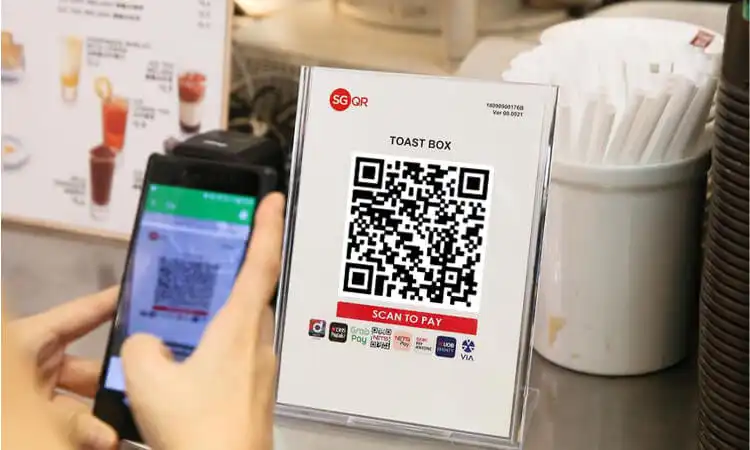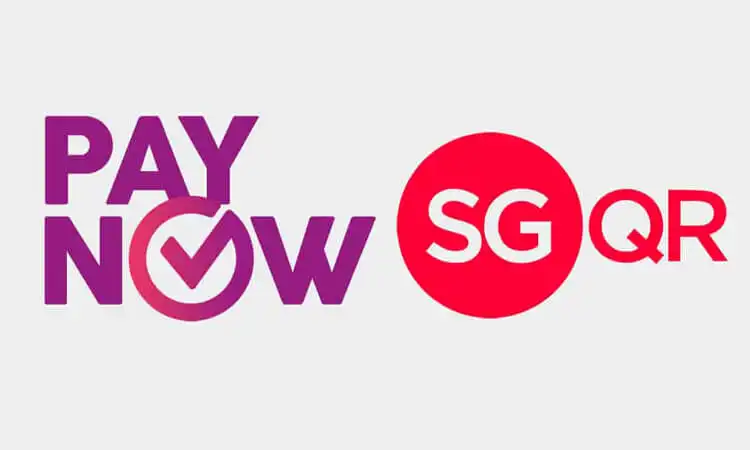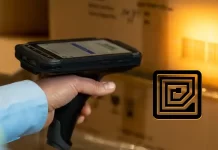With the rise of cashless transactions, Singapore’s SGQR has become increasingly popular. SGQR, or Singapore Quick Response Code, is a standardized QR code that enables merchants to accept many payment options. This article aims to provide a comprehensive guide on how to use SGQR, including how it works, and how to make payments using SG QR. By incorporating research and facts, you will better understand this innovative payment method.
What is SGQR?
SGQR, which stands for Singapore Quick Response Code, is a unified payment solution introduced in Singapore in 2018. It is an initiative by the Monetary Authority of Singapore (MAS) to simplify the payment process for consumers and merchants in the country. SG QR is a single QR code that can accept payments from many e-payment apps, including PayNow, GrabPay, and NETS.
Singapore Quick Response Code enables merchants to display a single QR code at their point of sale, which customers can scan to initiate the payment process. This eliminates the need for merchants to display many QR codes for different e-payment apps. This is because these QR codes can be confusing and cluttered.
SG QR uses the EMV QR Code specification, an international standard for QR codes used for payments. This standard ensures that SG QR is interoperable with other payment systems that use the same standard. This makes it easier for Singapore to connect with the global payments network.
SGQR also supports dynamic QR codes, which means that the amount to be paid can be included in the QR code. This simplifies the payment process for customers, as they do not need to enter the payment amount into their e-payment app manually. This information can be read by a smartphone or a QR code scanner, allowing consumers to make payments easily and quickly.
Singapore Quick Response Code has been widely adopted by merchants in Singapore, with over 100,000 SG QR codes issued to merchants as of 2021. It is supported by various payment providers, including DBS Paylah!, GrabPay, and Singtel Dash.
One of the key advantages of SGQR label is its simplicity and convenience. Consumers only need to scan a single QR code to make a payment instead of using different QR codes for different payment platforms. This makes the payment process faster and more efficient.
In addition, SG QR also supports different payment methods, including credit and debit cards, e-wallets, and bank transfers. This provides consumers with more options and flexibility when making payments.
How does SGQR Work?
SGQR allows merchants to generate a unique QR code containing all the information required to process a payment. The code can be generated using various tools, such as mobile apps, web portals, or point-of-sale terminals.
When consumers want to pay, they scan the SGQR code using a smartphone or QR code scanner. The code contains the merchant’s name, payment amount, payment method, and other information.
Once the consumer scans the code, they are directed to a payment page or app where they can select their preferred payment method. Some of the more common types are credit or debit cards, e-wallets or bank transfers. The payment is then processed using the payment method chosen, and the transaction is complete.
Singapore Quick Response Code is supported by various payment providers, including local banks and e-wallet providers. This allows merchants to receive payments from a wide range of sources, making it easier for them to manage their finances.
The technology behind SG QR is based on international QR code standards, such as EMVCo and UnionPay. This ensures that the SG QR code is compatible with different payment platforms and can be used by various payment providers.
SGQR label is also designed to be secure and reliable. The QR code contains encrypted information protected from fraud and unauthorized access. Merchants must also undergo a verification process before receiving an SG QR code. It ensures that only legitimate merchants can use the payment method. In addition, SGQR transactions are processed using secure payment gateways compliant with international security standards.
How to Apply SGQR
Applying for SGQR is a straightforward process for merchants in Singapore. This involves registering with a payment provider and obtaining a unique SGQR code. Here is a step-by-step guide on how to apply for SG QR:
- Choose a payment provider – Merchants can choose from a list of payment providers that support SGQR, such as PayNow, NETS, or GrabPay.
- Register for an account – Merchants will need to register for an account with the chosen payment provider. This typically involves providing some basic information about the business, such as its name and contact details.
- Apply for an SGQR code – Once the account has been set up, merchants can apply for an SG QR code through the payment provider’s website or mobile app. They will need to provide some additional information, such as the type of business and the location where the code will be displayed. They can customize the code with their own logo and branding, making it easy to identify and recognize.
- Wait for approval – The payment provider will review the application and verify the merchant’s identity before issuing an SGQR code. Typically, it takes several days to complete the process.
- Display the SGQR code – Once the SGQR code has been issued, merchants can display it at their place of business or on their website. Then, consumers can scan the code to pay using their preferred payment method.
It is worth noting that some fees may be associated with using SG QR, such as transaction fees charged by the payment provider. However, these fees are typically lower than those charged by traditional payment methods, such as credit card transactions.
How to Use SGQR to Pay

Using SG QR to make payments is a quick and easy process for consumers in Singapore. Here are the steps to use SG QR to pay:
- Open the mobile payment app or camera on your smartphone.
- Scan the SGQR code displayed at the merchant’s payment counter or on their website.
- Confirm the payment amount and select the payment method, such as credit card or e-wallet.
- Enter your payment details, such as your credit card number or e-wallet ID.
- Submit the payment and wait for the transaction to be processed.
Once the payment has been processed, you will receive a confirmation message on your smartphone or email. You can also check your payment history on your payment provider’s mobile app or website.
You need to ensure that the SG QR code is displayed prominently and clearly so that consumers can easily scan it to make payments. Consumers should also ensure that their payment details are accurate and up-to-date to avoid any payment errors or delays.
Using SGQR label to make a payment is a fast, convenient, and secure payment method compatible with different payment platforms. By adopting Singapore Quick Response Code, consumers can enjoy a seamless payment experience. Merchants can offer a versatile payment method that caters to different customer needs. Its ease of use and security have made it a popular payment method among consumers in Singapore.
SGQR Payment Method
SGQR payment options are numerous and it supports various payment methods in Singapore. Consumers can use SG QR to make payments using the following methods:
- Credit and debit cards: Consumers can use their Visa, Mastercard, or American Express credit or debit card to make payments via SGQR.
- E-wallets: SG QR supports various e-wallets, such as PayNow, GrabPay, and FavePay. It allows consumers to make payments using their preferred e-wallet.
- Bank transfers: Consumers can transfer money directly from their bank account to the merchant’s account using SGQR label.
- PayNow: PayNow is a real-time fund transfer service widely used in Singapore. Consumers can make PayNow payments via SGQR by scanning the code and entering their mobile number or NRIC/FIN.
- NETS: NETS is a payment network that supports debit and credit cards and eNETS, and NETSPay. Consumers can use NETS to make payments via SGQR.
SGQR is designed to be compatible with different payment platforms. It makes them easy for consumers to pay using their preferred payment method. It is also fast and convenient, with transactions completed in seconds.
Merchants can benefit from SG QR by offering their customers a seamless and secure payment method that supports different payment options. This is because these can improve customer satisfaction and increase sales.
By supporting many payment methods, SG QR allows consumers to choose the payment method that is most convenient for them. This has made it a popular payment method among Singapore consumers, who appreciate its flexibility and convenience.
SGQR vs. Paynow QR
| SGQR | PayNow QR | |
|---|---|---|
| Payment methods | Supports various payment methods, such as credit and debit cards, e-wallets, and bank transfers | Supports payments via bank transfers |
| Transaction limits | Up to SGD 25,000 per transaction | Up to SGD 5,000 per day per user |
| Merchant fees | Lower compared to PayNow QR | Higher compared to SGQR |
| Payment process | Scan QR code and confirm payment details on mobile app | Enter merchant’s UEN or mobile number to initiate payment |
| Widely accepted | Yes | Yes |
SGQR and PayNow QR are both mobile payment methods widely used in Singapore. While they share similarities, there are some key differences between SGQR and PayNow QR:
- Payment options: SGQR supports various payment options, including credit and debit cards, e-wallets, and bank transfers. On the other hand, PayNow QR is limited to bank transfers only.
- Transaction limits: SGQR has higher transaction limits compared to PayNow QR. PayNow QR has a daily transaction limit of SGD 5,000 per user, while SGQR has a higher transaction limit of up to SGD 25,000 per transaction.
- Merchant adoption: SGQR is widely adopted by merchants in Singapore, including small and medium-sized businesses. PayNow QR is primarily used for peer-to-peer transactions, with limited adoption by merchants.
- Merchant fees: SGQR has lower merchant fees compared to PayNow QR. This makes it a more cost-effective payment option for merchants.
- Payment process: SGQR requires consumers to scan the QR code and confirm the payment details on their mobile app. PayNow QR requires consumers to enter the merchant’s UEN (Unique Entity Number) or mobile number to initiate the payment.
- Integration with other services: SGQR integrates various value-added services, such as loyalty programs and invoicing. This makes it more versatile for merchants. PayNow QR has limited integration with other services.
- Branding: SGQR allows merchants to customize their QR code with their business logo and branding, while PayNow QR does not have this feature.
Both SGQR and PayNow QR are convenient and secure payment methods in Singapore. But they differ in their payment options, transaction limits, merchant adoption, and integration with other services. Consumers and merchants should choose the payment method that best suits their needs.
Why Use SGQR?
There are several reasons why Singapore Quick Response Code is a popular payment method in Singapore:
- Convenience: SGQR offers a quick and easy way for consumers to make payments using their preferred payment method.
- Security: Singapore Quick Response Code uses encryption to protect consumer data and prevent fraud. This makes it a secure payment method.
- Versatility: SGQR supports various payment methods, including credit and debit cards, e-wallets, and bank transfers. It allows consumers to choose the payment method that is most convenient for them.
- Cost-effective: SGQR has lower merchant fees compared to other payment methods, such as credit card payments. This low fee makes it a more cost effective option for merchants.
- Higher transaction limits: SGQR has higher transaction limits compared to other payment methods. It allows merchants to accept larger transactions.
- Wide adoption: Singapore Quick Response Code is widely adopted by merchants in Singapore. This makes it a convenient payment method for consumers across the country.
SGQR Application Examples
Many well-known companies in Singapore have adopted SGQR codes as a customer payment method. Here are some examples of famous companies that are already using SG QR in real life:
- McDonald’s: The fast-food chain has integrated SGQR label codes into its mobile app. They allow customers to pay for their orders using their preferred payment method.
- ComfortDelGro: One of the largest taxi operators in Singapore has integrated SGQR payments for their taxi fares. Commuters can use their preferred payment methods, such as their credit card or e-wallet. They can pay for their fare by scanning the SGQR code on the reader.
- Grab: The ride-hailing and delivery company has integrated Singapore Quick Response Code payments into its app. They allow users to pay for their rides or food deliveries using their preferred payment method.
- Singapore Airlines: The national airline carrier of Singapore has implemented SGQR codes to accept payments for in-flight purchases, such as food and beverage and duty-free items.
These are just a few examples of famous companies already adopting SGQR label in Singapore. Many more companies, including NTUC FairPrice, Sentosa Island, National Environment Agency (NEA), and CapitaLand, are adopting SGQR codes as payment methods. With its widespread acceptance and convenience, more companies are expected to integrate SGQR payments into their operations in the future.
SGQR has emerged as a popular payment option in Singapore, offering consumers and merchants convenience, security, and cost-effectiveness. With its support for many payment methods, higher transaction limits, and widespread acceptance, SGQR is poised to continue growing as a preferred payment option for Singaporeans. So why not give SGQR a try and experience the ease and benefits of this innovative payment method for yourself?
Video Source:











